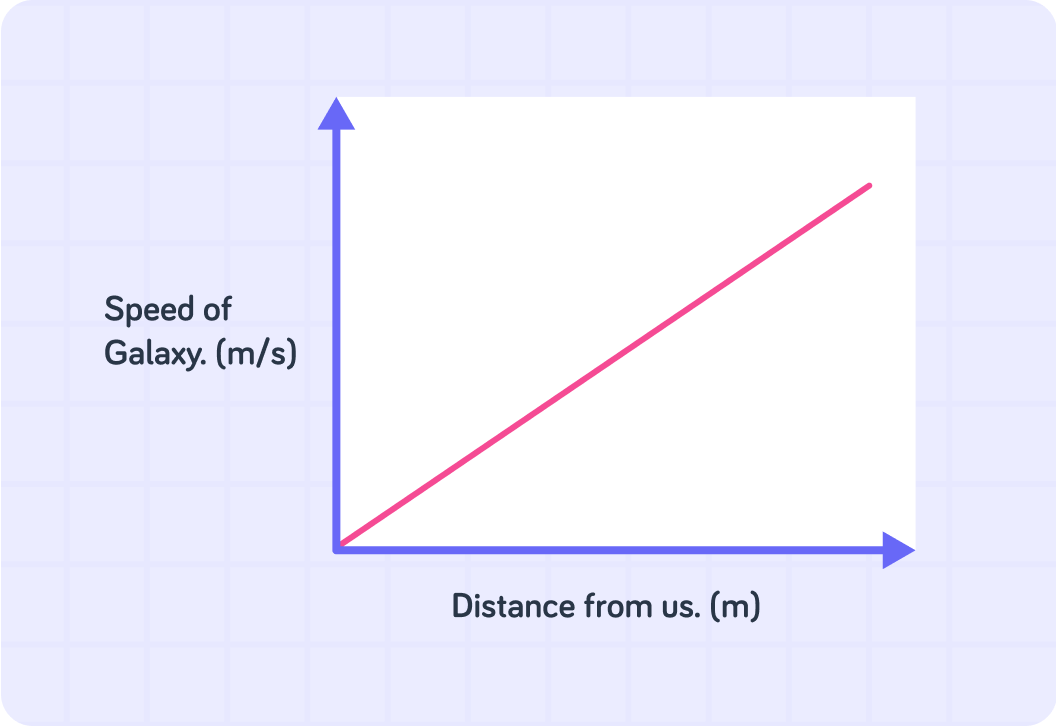YOU ARE LEARNING:
How Theory Has Changed Over Time

How Theory Has Changed Over Time
The Big Bang theory is not the only theory we have about how the Universe began, for example there's also Steady State theory.
According to the Big Bang Theory, what happened around 13.8 billion years ago?

The Big Bang theory suggests that the entire universe began with a massive explosion. What do you think scientists would do if new evidence was found that did not support this theory?

The Big Bang theory was first proposed in 1929 and since then further research has provided evidence to support it. However, in the 1940's, another theory was proposed for how the Universe started. This theory was named the Steady State theory.
The Steady State theory does not agree that there was a 'big bang' which led to the creation of our Universe. If the Steady State theory dismisses a big bang, then what does it suggest?

Both the Steady State theory and the Big Bang theory agree on one fact, namely that the Universe is expanding. However, Steady State theory suggests that the Universe has always been expanding. It has no beginning and no end.
According to the Steady State theory, what was the Universe like 14 billion years ago?

According to the Steady State theory, the Universe is constantly expanding, but is always the same density. Which one of these diagrams do you think represents the Steady State theory? Answer 1 or 2.


Theory 2 in the diagram has a constant density of matter.
So theory 2 represents the Steady State theory as the density remains the same in the expanding universe.

If the density of matter in the Universe remains constant even though the Universe is expanding, what must be happening?
A) New matter is constantly being created B) All matter is expanding C) Matter is constantly being destroyed
Answer A, B or C.


The diagram labelled theory 1 represents the Big Bang theory. What can you say about the density of matter in the Universe?
A) It remains constant B) It decreases C) It increases
Answer A, B or C.


According to the Big Bang theory, the matter in the Universe is conserved, but in the Steady State theory, new matter is created as the Universe expands.
This is a key difference between the two theories.

American astronomer Edward Hubble found that all other galaxies are moving away from us. Looking at the graph, what can you conclude about the relationship between the distance of a galaxy and the speed it is moving at?
A) The closer the galaxy is to us, the faster it is moving. B) The further the galaxy is from us, the faster it is moving. C) The distance of the galaxy from us does not affect its speed.
Answer A, B or C.


Astronomers have discovered that, in general, the further away a galaxy is from us, the faster it is moving away from us.
This is similar to an explosion, where the bits moving fastest travel furthest from the explosion.

True or false? Everything in the Universe is moving away from us, and the galaxies that are the furthest away move the fastest away from us, so Earth is where the explosion happened - the centre of the Universe.

This image shows how the Universe is expanding.
It's kind of like a bread dough proving. It doesn't explode out from one point. The whole things expands so that all elements are moving further away from each other.

So although galaxies appear to be moving away from us, it doesn't mean that our galaxy is the centre of the Universe.
In fact, all galaxies are expanding and moving away from each other. It is simply that from our point of view it seem as though they are moving away from us in particular.

Distant galaxies appear to be moving away from us, with the furthest moving at faster speeds. Which theory does this support?

Why do you think the Steady State theory is not the preferred model to explain the origins of the universe?

So there is more direct evidence supporting the Big Bang theory. For example, astronomers have discovered a cosmic microwave background radiation (CMBR). This comes from all directions in space and has a temperature of about -270°C. The CMBR is the remains of the thermal energy from the Big Bang, spread thinly across the whole Universe.
